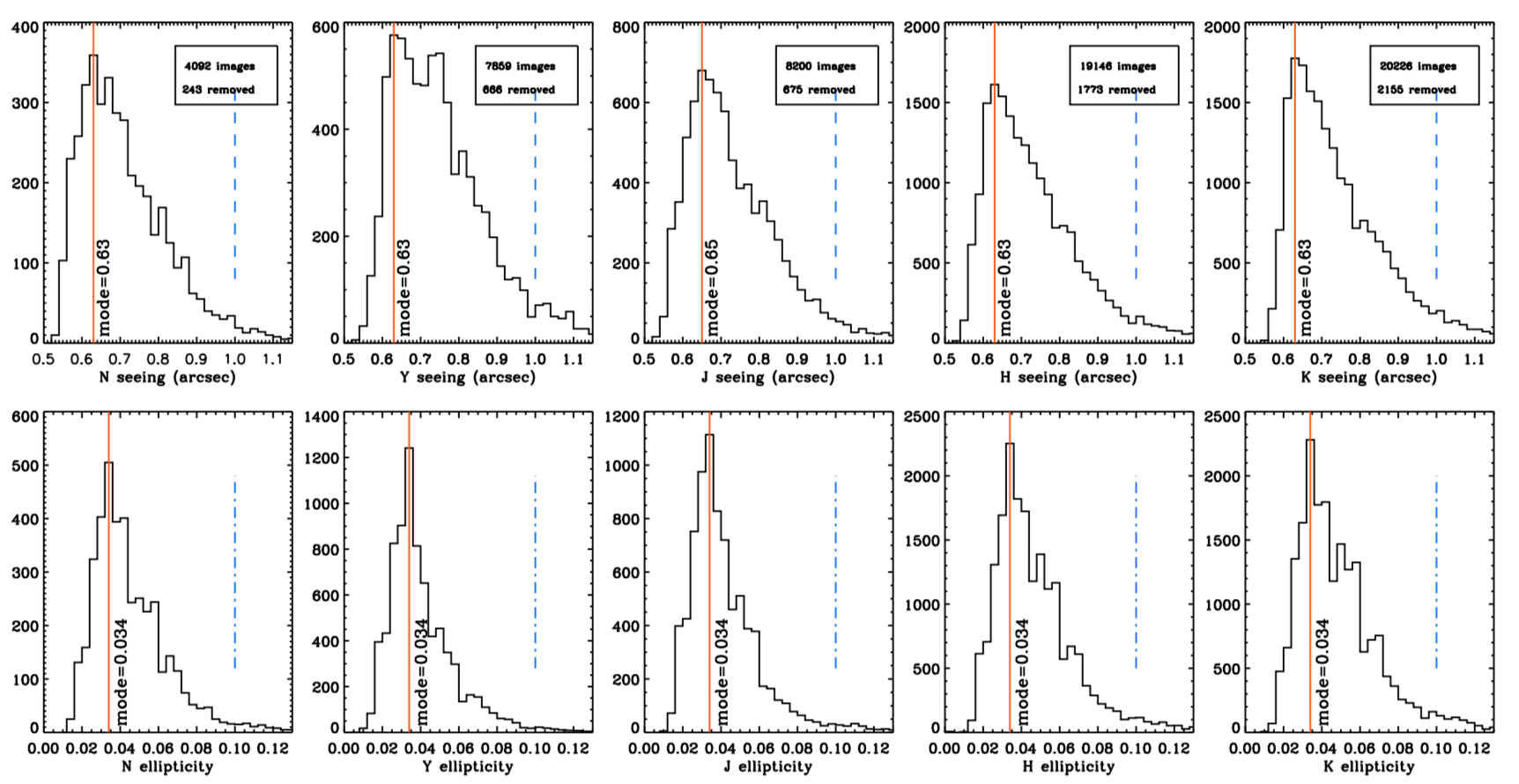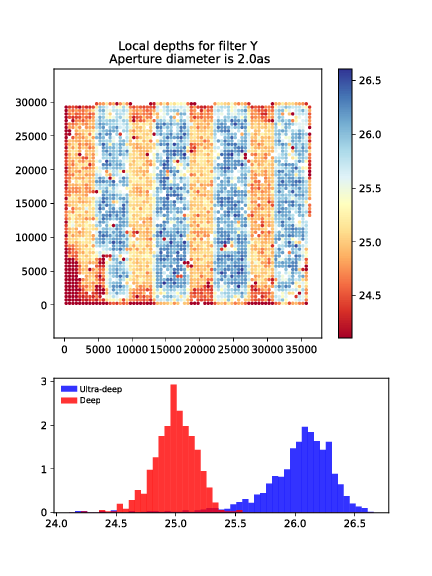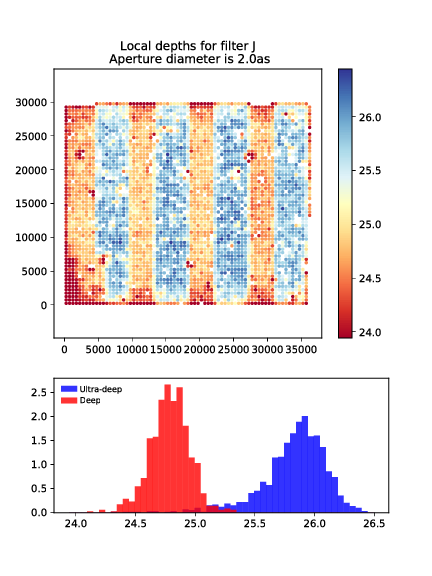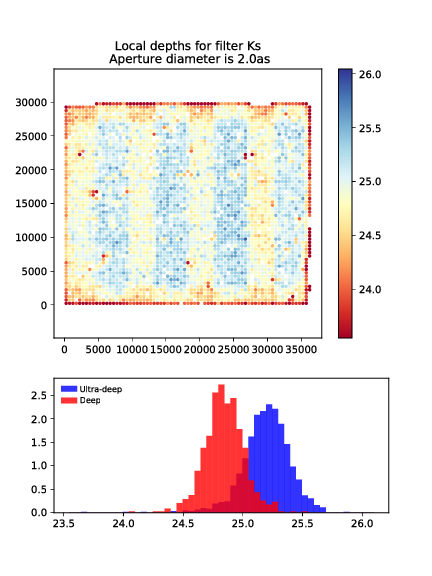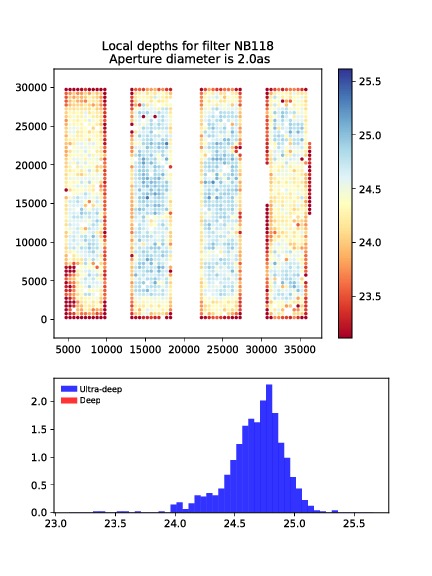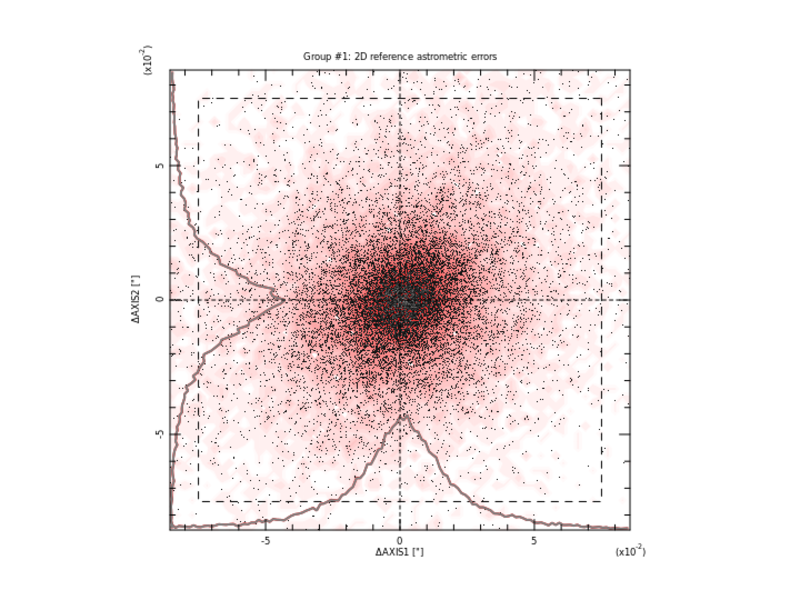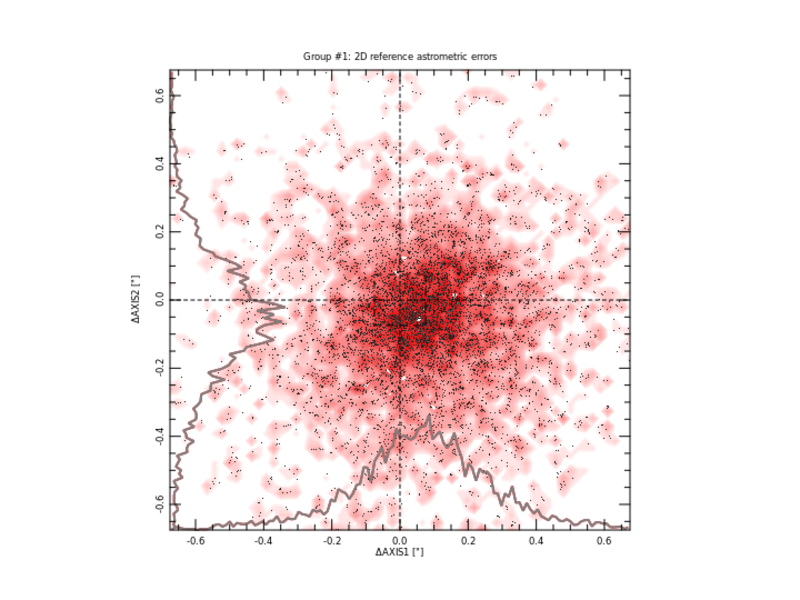The UltraVISTA DR4 RC2 is being made available for internal testing by the UltraVISTA consortium. If no issues are found this data will be made public worldwide through the ESO phase 3 portal in the coming months.
UltraVISTA is a deep survey of the COSMOS field using the VIRCAM camera on ESO’s VISTA telescope. DR4 comprises all data taken for UltraVISTA at VISTA between December 2009 and June 2016 (after rejection of bad images). As in previous releases, data was reprocessed from the CASU individual images (sky-subtraction was repeated). One of the principal differences compared to previous releases is that DR4 now uses the highly-precise GAIA DR1 astrometric catalogue.
Data access
For now, data are being distributed through a server at IAP; details of access have been communicated with UltraVISTA consortium members. The data will be made public once testing has been completed and it is ingested at ESO’s Phase 3 system.
Contents of the release
This release comprises five stacks and their corresponding weight maps in YJHK and NB118 narrow band. Each image has a magnitude zero point (normalised to one second) of 30.0 AB magnitudes. For the conversion between AB magnitudes and VEGA we adopted the conversion factors in McCracken et al. (2012). As in previous releases, each image is aligned with the COSMOS tangent point and has a pixel scale of 0.15”/pixel and a size of 48906 times 48906 pixels. Note that, because of thi change in astrometric reference frame compared to previous releases, small offsets may be observed compared (see below). In DR4, the “deep stripes” region in Ks is approximately 0.9 magnitudes deeper than previously.
Data processing
We use a revised version of the TERAPIX VIRCAM processing pipeline (adapted to run on a new computer cluster) to process the approximately 60,000 images which make up UltraVISTA DR4. As before, we use a double-pass (in this case actually a triple-pass) sky subtraction technique in which an an object mask is created from a stack of all data in each band. This is used to mask all objects present in the individual images to create a sky image which can then be subtracted from each individual image. After several additional processing steps the end result is a stacked image which is extremely flat and a background which is almost completely free of artefacts.
Note that, in comparison with previous releases, detector 16 (which is known to be unstable) has not been masked. This means that the total area of each stacked image is larger than before; however the characteristics of this region (in the bottom left of the stack) should be carefully assessed for each scientific application.
Histograms of the seeing and ellipticity distributions for all input images are shown below. Data are discarded (i.e., not used to make the final stack) if the seeing or input ellipticity (measured on stellar sources) are larger than 1″ and 0.1 respectively.
Limiting magnitudes
We computed 5-sigma noise limits in 2″ apertures over each of the five stacked images, shown in the series of figures below.
- Y-band
- J-band
- H-band
- Ks-band
- NB118 band
Astrometric precision
We extracted catalogues in each of the five stacked images and compared them to GAIA DR1 (our reference catalogue); click for the full-sized images. Dotted lines in a square show the size of one pixel in the stack (0.15″). Internal astrometric precision is 20mas rms over all bands, a significant improvement over previous releases.
- DR4 all bands compared to GAIA
- DR4 all bands compared to 2MASS
Photometric precision
We compared photometry in each of five bands with previous UltraVISTA releases (DR3) and with the 2MASS all-sky catalogue. In all cases the systematic offset between DR4 and previous releases for non-saturated stellar sources is less than 0.01 magnitudes, well below the precision of our absolute photometric reference.
Image quality
Using SExtractor catalogues extracted on each of the five stacks, we measured image quality using PSFex. We find the FWHM on all images is 0.75+/-0.05″.
Caveats and warning
Release schedule
After a period of testing, this release will be distributed through ESO’s PHASE 3 system. A full release document will be distributed at this time.
DR4 data processing team
Many people contributed to the DR4 data processing effort.
Andrea Moneti: processing, pipeline development, data quality control;
Patrick Hudelot: pipeline development;
Bo Milvang-Jensen, Olivier Kauffmann, Rebecca Bowler: data quality control;
Jim Dunlop, Olivier Le Fèvre, Johan Fynbo, Marijn Franx: oversight;
S. Rouberol: infrastructure;
H. J. McCracken: coffee.
Acknowledgments
The computer cluster used to process the UltraVISTA DR4 dataset was created thanks to a starting grant from the “Le Domaine d’Intérêt Majeur ACAV” and additional funding from French national program for cosmology and also from successive grants from the CSAA who funded the TERAPIX operation from 1997-2017; TERAPIX hardware has been incorporated in CANDIDE. We have made extensive use of the Astromatic software suite, and we thank E. Bertin for many useful discussions.
Acknowledging this work
Any work using UltraVISTA DR4 images should include a citation to McCracken et al. (2012) and the following text:
Based on data products from observations made with ESO Telescopes at the La Silla Paranal Observatory under ESO programme ID 179.A-2005 and on data products produced by CALET and the Cambridge Astronomy Survey Unit on behalf of the UltraVISTA consortium.

